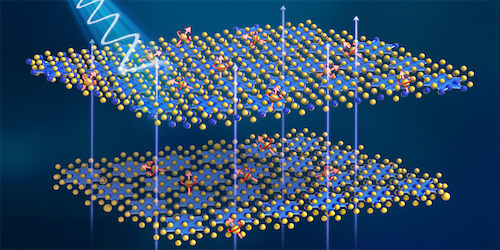A Fine Probe of Layer Stacking
Two-dimensional (2D) materials—comprising a single atomic layer—display remarkable electronic and optical properties that could find a broad range of applications. By stacking 2D materials on top of each other, researchers can further expand the palette of achievable material properties. The behavior of these layered structures critically depends on the relative layer orientation, but characterizing this stacking poses a formidable challenge. Now Xiaolong Zou of Tsinghua University in China and colleagues have combined nuclear magnetic resonance (NMR) experiments with first-principles calculations to extract unprecedently detailed stacking information for the layered transition-metal dichalcogenide 1T-TaS2 [1]. Their approach could allow researchers to investigate the role of stacking in many low-dimensional quantum materials, Zou says.
The material 1T-TaS2 has been a focus of intense research by virtue of its exotic behaviors, including superconductivity, charge-density waves, flat bands, and other quantum phases. But its disorder and the large number of possible stacking configurations have so far prevented a reliable characterization of stacking and its relationship to material properties. Zou and colleagues’ work demonstrates that stacking information can be extracted from the NMR spectra of the S atoms in the material. Such spectra are sensitive probes of stacking because the observed atomic transitions are strongly coupled to the distribution of electrons in the material layers. Using first-principles calculations, the researchers showed that they could accurately reproduce, without fitting parameters, the NMR spectra. Their analysis revealed the presence of two distinct types of interfaces between the stacked layers.
The ability to characterize stacking could turn it into a useful control knob for various exotic properties in layered materials, from ferroelectricity to exotic electronic phases induced by electronic correlations, Zou says.
–Matteo Rini
Matteo Rini is the Editor of Physics Magazine.
References
- L. Cheng et al., “Probing complex stacking in a layered material via electron-nuclear quadrupolar coupling,” Phys. Rev. Mater. 7, L091001 (2023).




